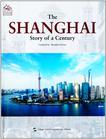上海
出版时间:2011-1 出版社:五洲传播出版社 作者:上海图书馆 编 页数:270
内容概要
《上海:一个世纪的故事(英文版)》主要内容包括:Revel Paradise - History of the Shanghai Race Club、Rise and Fall in 100 Years - History of the Lyceum Theater Salutary Influence of Education from Nanyang Public School to Shanghai Jiaotong University、In the Footsteps of Tourists: the Present and Past of Shanghai Tourism等。
书籍目录
Preface: Memories of Shanghai's Cityscape
The Bund against the Skyline of the Huangpu River
River Charms: the Past and Present of the Suzhou Creek
Nanjing Road, a Legendary Grand Boulevard
Rainbow of a Century - Shanghai's Garden Bridge
Peace Hotel, Elegance and Glory for Over a Century
Revel Paradise - History of the Shanghai Race Club
Rise and Fall in 100 Years - History of the Lyceum Theater Salutary
Influence of Education from Nanyang Public School to Shanghai
Jiaotong University
In the Footsteps of Tourists: the Present and Past of Shanghai
Tourism
Shanghai Marriage Customs - An Everlasting Theme
A Solid Melody - Residence in Shanghai
Shanghai Transportation, the Moving Scenery
World Expo and Shanghai: A Dream of a Century
章节摘录
版权页:插图:Shanghai is also called 'Hu' for short and knownas 'Shen' because of its location by the Chunshen (alsoHuangpu) River, named after the Lord of Chunshenduring the Warring States Period (475-221 B.C.).Simply by the name of it, Shanghai (literarily UpperSea in Chinese) is a city closely associated with water.The geographical seaside location and innumerablewatercourses contribute a lot to Shanghai's development,making a fishing village into an international metropolis.The Huangpu River flowing across the city from southto north and all the way into the East China Sea hasalways been the major route of river transportation sincemodern times. The historical architecture along theBund by the Huangpu River has become a famous scenicsight, renowned at home and abroad. By comparison,the longer and narrower Suzhou Creek which flows fromwest to east is of totally different style and features.Suzhou Creek was previously known as the WusongRiver. After Shanghai opened its port to foreign trade,Westerners renamed it as Suzhou Creek, since it reachesSuzhou, This name is still used today, and most peoplehave forgotten the original name. Since the HuangpuRiver used to be the starting point of the foreignsettlements at the east of the city, Westerners reliedon it to enter and leave. The European style buildingswere everywhere, surrounded by foreign firms andhotels which keep their original appearance up to thepresent day. By comparison, Suzhou Creek is moreintroverted and complicated. Despite of the fact thatit is also a major route for river transportation which links Shanghai with the hinterland in China, Suzhou Creek was much less in ternationalized.The long andmeandering Suzhou Creek traverses several districts ofShanghai with different functions and different views atdifferent locations, whether it be a forest of Western-style buildings in the eastern section, the dense cargoareas in the middle section or a jumble of factories inthe western section, which form varied characteristicsegments across the city. Besides, the Creek is narrow,no more than 70 meters at its widest place, so it iscomparatively easy to build bridges. In 1856, foreignmerchants built the first bridge, the Wells Bridge.Since then, more and more bridges have been builtover the Creek, connecting the districts of both sides.More importantly, for the ordinary people, the Bund,a representative of the Huangpu River, is a microcosmof a dazzling foreign world, an unapproachable areafor extravagant consumption; but the Suzhou River ismore approachable. Compared with the Huangpu River,Suzhou River is modest, real and more affordable, forthis is where people live and work and where their veryexistence is.
编辑推荐
《上海:一个世纪的故事(英文版)》是由五洲传播出版社出版的。
图书封面
评论、评分、阅读与下载
用户评论 (总计1条)
- 很不错的书,折扣时候买的,真心不错!
